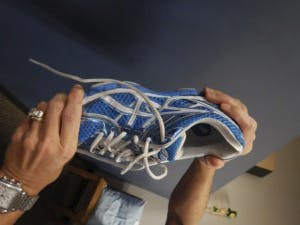With spring upon us, we tend to want to go outdoors and be more active. With this in mind, remember to look at what type of shoes you are wearing. No matter the activity you choose, your shoes need to have stability in order to prevent injuries, not only in your feet, but up the kinetic chain to your knees, hips and spine. There are three easy tests you can perform when buying new shoes or just making sure your current shoes are substantial enough.
The Twist Test: Assess torsional stability by holding the heel and toes and twisting the sole of the shoe. The shoe should twist slightly, but should not be able to twist it like you are wringing out a wet rag.
The Squish Test: Check sole stability by assessing where the shoe bends at the ball of the foot. Hold the heel and toes between your hands and bring the hands together to check where the shoe bends. The bend should occur where your foot would bend at the ball.
The Heel Counter Test: The heel counter is the cup around your heel that helps control the movement of your heel when you stand and walk. It should be stable enough that it doesn’t collapse when you push it with your thumb.
Also remember that a good shoe size is important too, and that shoes can vary in sizing depending on the type of shoe. Make sure you are trying on your shoes and looking for a ¼- ½ inch of space between your toes and end of the shoe when standing.
Information adapted from: https://www.abcarticledirectory.com/Article/Shoe-Stability-Tests-and-Shoe-Fitting/921772#sthash.nmFQCxOs.dpuf
Performing the three tests described above you will notice the blue shoe provides support and is still good. The black sneaker is worn out and does not provide adequate support and should be replaced.






